I slept in a luxury tent at a resort with a focus on sustainability. 4 simple details made my stay feel truly glamorous.
Joey Hadden

- I stayed at Under Canvas, a glamping resort next to the Great Smoky Mountains.
- Under Canvas partners with The Nature Conservancy and has several sustainability practices.
- In my tent, I found a pull-chain shower, a rechargeable battery pack, and a skylight.
Under Canvas is a glamping resort with locations near national parks around the country, from Zion to Yellowstone.
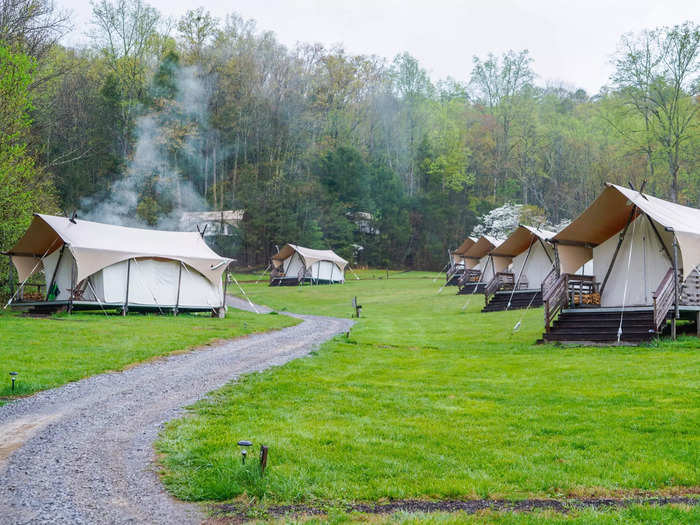
The luxury resort has 11 locations near national parks around the country, from Zion and Moab to Glacier and Yellowstone.
The glamping resort's focus is on creating a community feel for its guests and makes its commitment to sustainability clear on its website, where it lists a number of environmentally friendly measures, including efforts to conserve water and energy and minimize light pollution.
I recently spent one night at the resort's Great Smoky Mountains location.
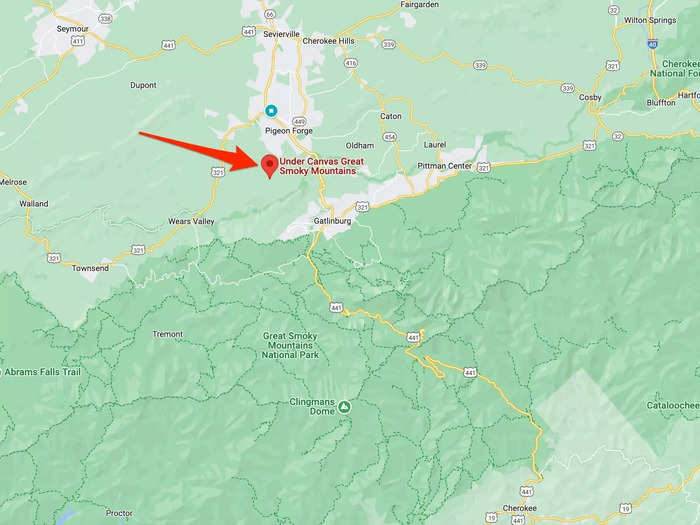
When I planned a trip to the Great Smoky Mountains in April, I wanted to be comfortable and immersed in nature, while reducing my carbon footprint.
So I turned to Jessica Blotter, the CEO and a cofounder of the public-benefit corporation Kind Traveler, for advice.
"Hotels that are truly eco-friendly should have a sustainability statement and clearly stated initiatives visible on their website," Blotter told me.
I followed her advice in my search for accommodation.
And when I found Under Canvas, I was glad to see the resort's website had a section dedicated to sustainability.
From there, I learned that Under Canvas partnered with The Nature Conservancy, a nonprofit that helps conserve natural resources around the world.
I slept in a $520-a-night "stargazer" tent. Six months later, I'm still thinking about how luxurious it was and the sustainable details that made my stay worth the cost.

I booked a stargazer tent for $400 with a media rate. Without the rate, it was $520 — making it more expensive than any camping experience I'd had.
Four details during my stay made it feel luxurious while I traveled sustainably. And ultimately, I found that the stay was worth the price tag.
Upon arrival, I noticed there was a skylight above the king-size bed in my tent that created the effect of a tranquil nook — and kept me from using lamps during the day.

The tent had a king-size bed and a full bathroom inside. I thought it felt more like a hotel room thanks to the wooden floors, modern, rustic furniture, and a bed larger than my own.
There was also a skylight above the bed, which caught my attention.
While curling up on the top of the mattress, I loved looking up at the tops of trees surrounding the campground. And having natural light kept me from using lamps during the day, which made for a more-sustainable stay.
The resort says it also uses low-level lighting around the campsite to limit light pollution, in accordance with the International Dark-Sky Association.
There was also a private bathroom, which I'd never experienced in a tent before. And inside, there was a pull-chain shower designed to conserve water.
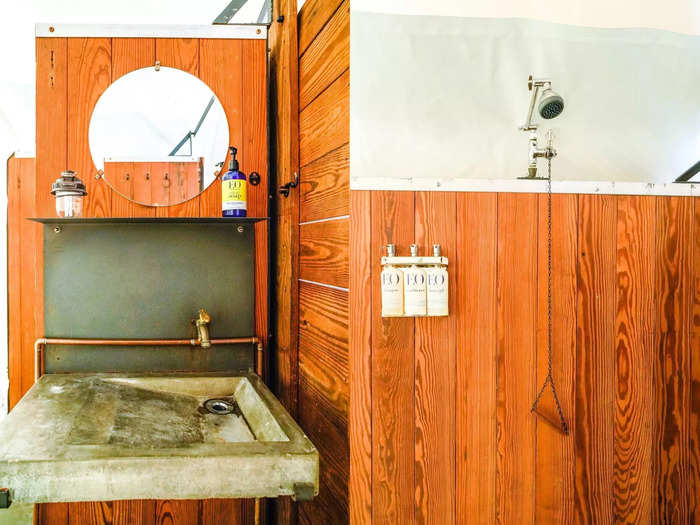
While showing me around my home for the night, a resort employee pointed out elements of the tent that helped reduce energy consumption — including a pull-chain shower that saved water by running only while the chain was down.
I don't take long showers, so I didn't mind having to hold the chain down while rinsing off. And I was impressed that I had a bathroom of my own while staying on a communal campground.
According to the resort's website, the bathroom has a low-flow toilet — which uses less water than a typical toilet — as well as a faucet that turns off by itself.
"Our camps use significantly less water and energy than a hotel of similar size," the resort's website says.
Surprisingly, not having WiFi felt like a luxury, too.

When I realized I wouldn't have WiFi at the resort, it certainly didn't feel like a luxury.
But a few hours in, I changed my mind. While an internet connection is convenient, it causes me to spend more time on my phone than I would without it. And staying off my phone while glamping made me feel more immersed in the experience.
It rained for a few hours during my stay, and I found myself reading in my skylight nook the whole time with the patter of the rain as my soundtrack. It was so calming and peaceful — and I couldn't even remember the last time I'd had my face in a book for that long.
Not having WiFi also makes the resort more sustainable because it saves energy.
I was able to charge my devices from the comfort of my tent using USB battery packs that the resort provided.
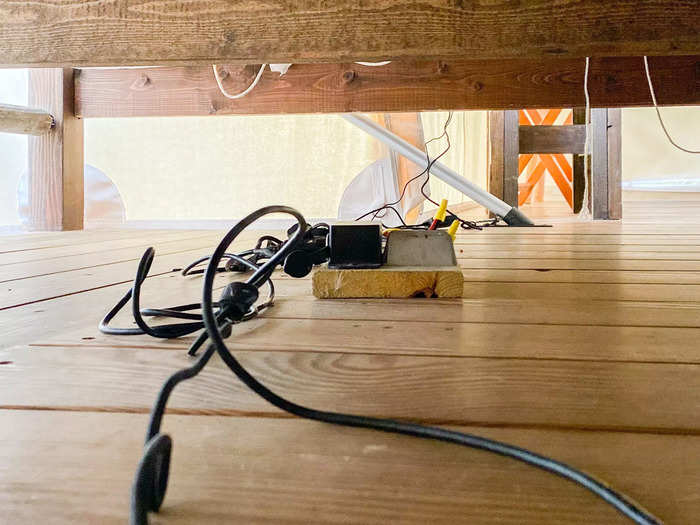
Since I didn't have WiFi, I was surprised to find that I could charge my devices in my tent — a luxury I'd never had before while camping.
According to the resort's website, its tents come with rechargeable battery packs, which are considered to be better for the environment than single-use batteries. I found mine under the bed.
Even though I wasn't surfing the web, this perk came in handy after I took pictures on my phone and camera around the campsite. Thanks to the battery pack, I could recharge these devices and take more pictures the next day.
Some Under Canvas resorts also have stations for electric-vehicle charging.
While I selected Under Canvas because of its sustainability efforts, I found that the eco-friendly practices of the resort made it feel more luxurious.
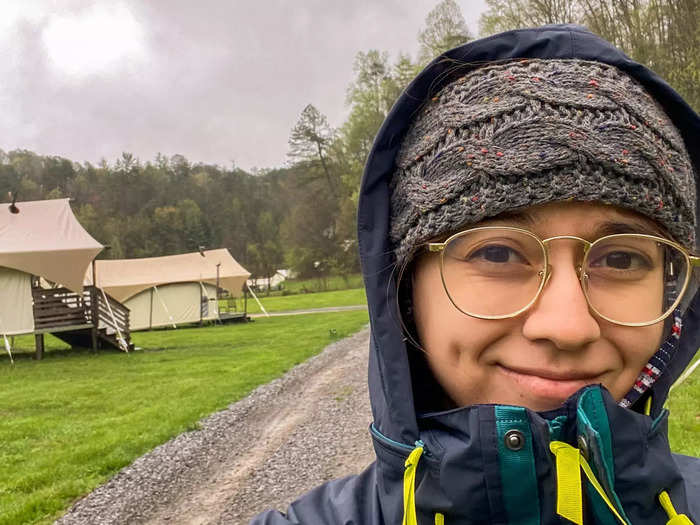
My night at Under Canvas was my most glamorous camping experience — and it proved to me that sustainable accommodation could still be luxurious.
Having an indoor bathroom in a tent made me feel like a VIP, and while the pull-chain shower might not sound ideal to some, it made me feel more connected to nature in a luxury environment. The king-size bed was also a grand addition to the tent, and the best part of my stay was cozying up with a book there under the skylight.
After my experience at Under Canvas' Great Smoky Mountains resort, I can't wait to stay at the locations near other national parks.
Popular Right Now
Popular Keywords
Advertisement